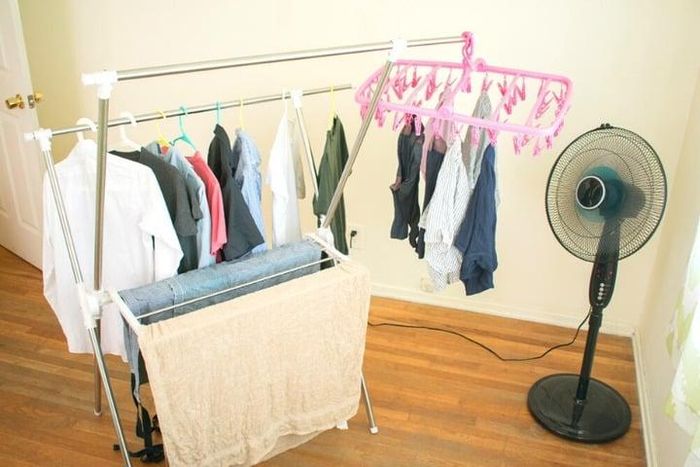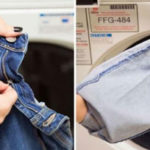The cold, rainy winter days can pose a challenge when it comes to drying clothes. The dampness and musty odor can be a headache for many. These quick tips will help you tackle this issue.
Ways to Quickly Dry Clothes in Winter
Depending on your specific situation, you can choose a few of the following tricks to speed up the drying process.
Use a Clothes Dryer
A clothes dryer is the quickest and most effective solution on cold days. Various types of dryers with different capacities and power ratings are available in the market, catering to household needs. They not only dry clothes rapidly but also maintain the fabric’s softness.

Using a dryer is the fastest way to dry clothes. (Image: Real Simple)
Utilize Heaters or Air Conditioners
If you don’t have a dryer, you can use heaters or air conditioners to your advantage. Hang your clothes near a heater or in a room with an air conditioner set to heating mode. The circulating warm air will help speed up the drying process.
Hang Clothes Near a Fan
A simple fan can be a lifesaver for your laundry on humid days. Hang your clothes indoors and turn on the fan to its highest setting to promote air circulation, helping to evaporate moisture from the clothes.

A quick way to dry clothes in winter. (Image: In The Wash)
Wring Out Excess Water Before Hanging
When washing clothes, either use the highest spin setting on your washing machine or, if hand washing, wring out as much water as possible. The drier the clothes are initially, the shorter the drying time will be.
Use a Dry Towel to Absorb Moisture
Lay your wet clothes on a dry towel, roll them up together, and gently squeeze to transfer excess water onto the towel. This will help speed up the drying process when you hang them up afterward.
Choose a Well-Ventilated Area for Drying
Ensure your clothes-drying area is well-ventilated to prevent stuffiness and excess moisture. If drying indoors, open a window to allow a breeze to enter the room. Avoid overcrowding your drying space, and maintain a reasonable distance between garments to facilitate air circulation, aiding in faster evaporation.

Drying clothes in a well-ventilated area speeds up the process. (Image: Fresh Clean)
Use Moisture Absorbers
Moisture absorbers are useful not only for food preservation and household item storage but also for reducing humidity in the air around your drying clothes. Place a few moisture absorbers near the drying area to help draw out excess moisture from the air.
Opt for the Best Time to Hang Clothes
The time of day you choose to hang your clothes significantly impacts the drying speed. The ideal time is early morning when the sun is gentle, and a gentle breeze is blowing. This combination of natural elements ensures your clothes dry without fading and helps evaporate moisture quickly.

Hang clothes early in the morning for quicker drying. (Image: Rent)
Shake Out Clothes Before Hanging
Before hanging your clothes, give them a good shake to reduce wrinkles and remove excess water. This is especially beneficial for cotton or easily wrinkled fabrics. Shaking the clothes also helps loosen the fibers, allowing better air circulation.
Source: VTC














